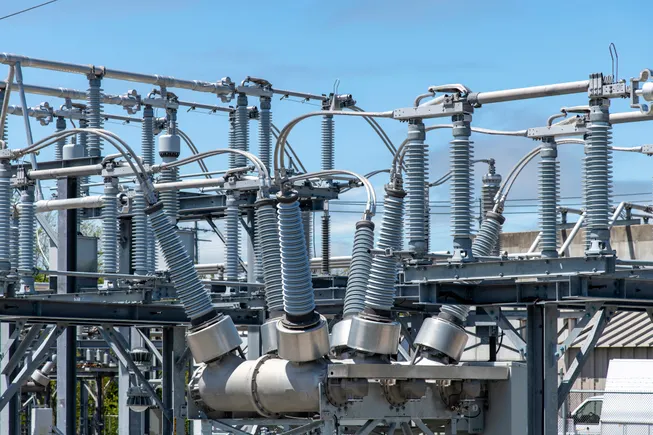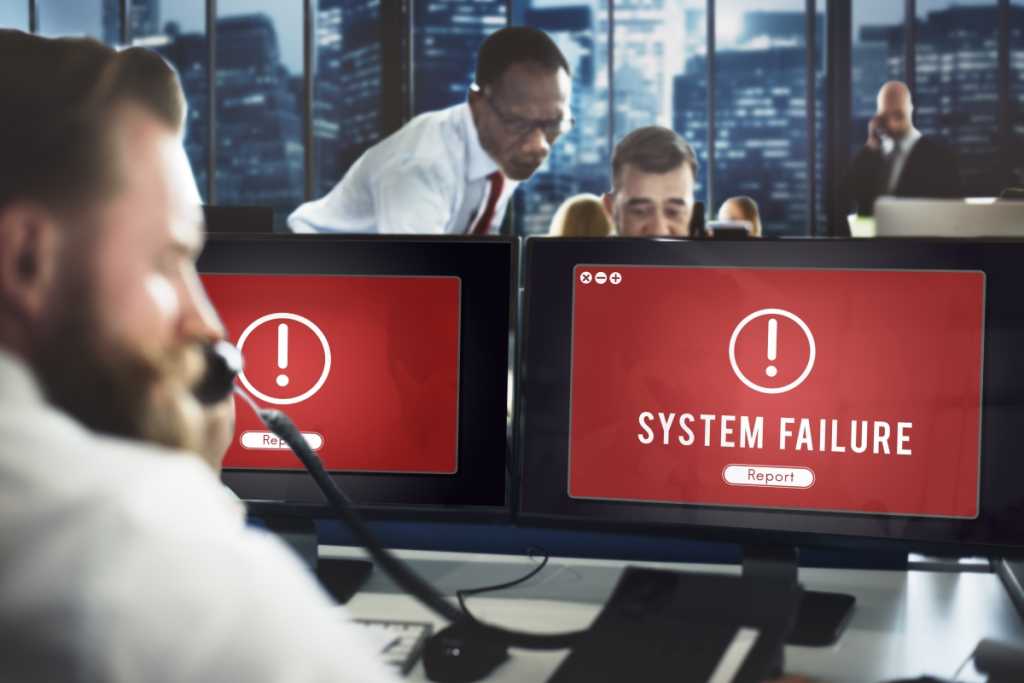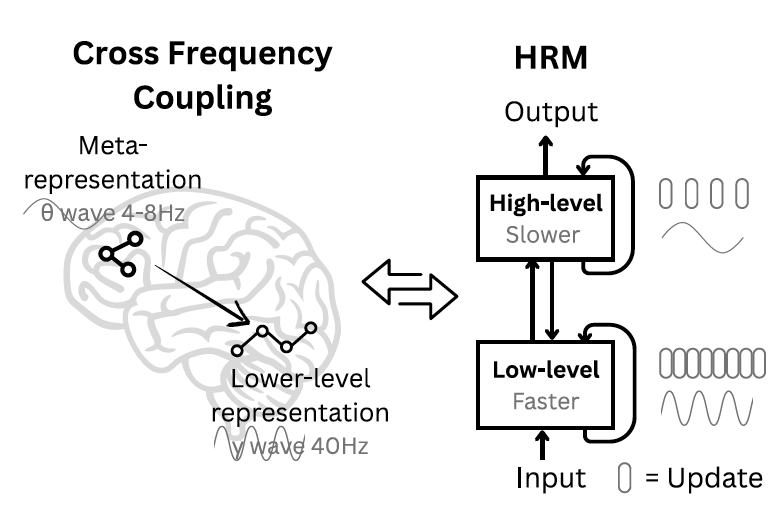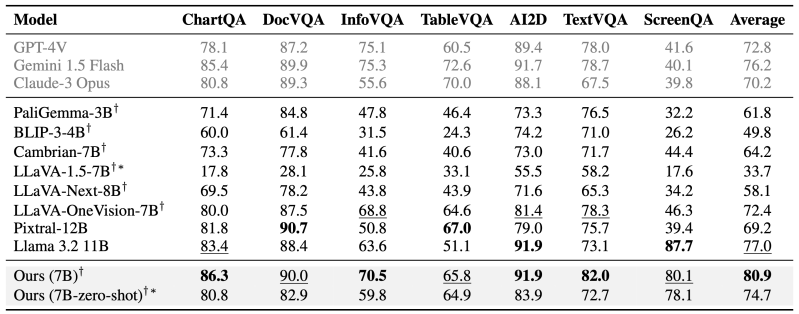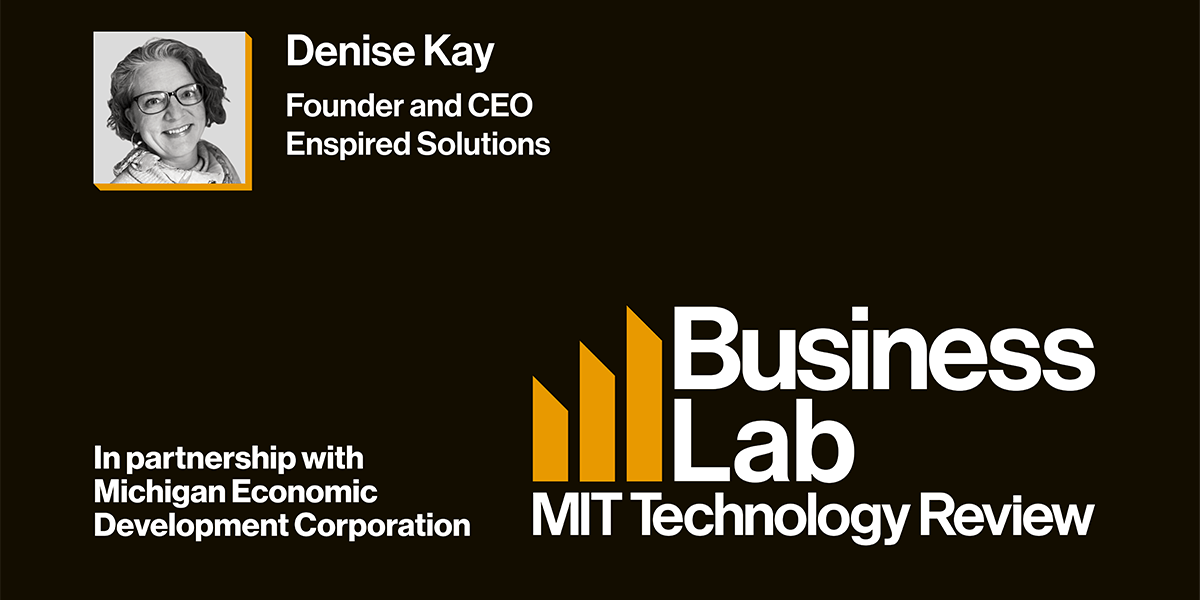
In partnership withMichigan Economic Development Corporation
What if we could permanently remove the toxic “forever chemicals” contaminating our water? That’s the driving force behind Michigan-based startup Enspired Solutions, founded by environmental toxicologist Denise Kay and chemical engineer Meng Wang. The duo left corporate consulting in the rearview mirror to take on one of the most pervasive environmental challenges: PFAS.
“PFAS is referred to as a forever chemical because it is so resistant to break down,” says Kay. “It does not break down naturally in the environment, so it just circles around and around. This chemistry, which would break that cycle and break the molecule apart, could really support the health of all of us.”
Basing the company in Michigan was both a strategic and a practical strategy. The state has been a leader in PFAS regulation with a startup infrastructure—buoyed by the Michigan Economic Development Corporation (MEDC)—that helped turn an ambitious vision into a viable business.
From intellectual property analyses to forecasting finances and fundraising guidance, the MEDC’s programs offered Kay and Wang the resources to focus on building their PFASigator: a machine the size of two large refrigerators that uses ultraviolet light and chemistry to break down PFAS in water. In other words, “it essentially eats PFAS.”
Despite the support from the MEDC, the journey has been far from smooth. “As people say, being an entrepreneur and running a startup is like a rollercoaster,” Kay says. “You have high moments, and you have very low moments when you think nothing’s ever going to move forward.”
Without revenue or salaries in the early days, the co-founders had to be sustained by something greater than financial incentive.
“If problem solving and learning new talents do not provide sufficient intrinsic reward for a founder to be satisfied throughout what I guarantee will be a long duration effort, then that founder may need to reset their expectations. Because the financial rewards of entrepreneurship are small throughout the process.”
Still, Kay remains optimistic about the road ahead for Enspired Solutions, for clean water innovation, and for other founders walking down a similar path. “Often, founders are coached about formulas for fundraising, formulas for startup success. Learning those formulas and expectations is important, but it’s also important to not forget that it’s your creativity and innovation and foresight that got you to the place you’re in and drove you to start a company. Ultimately, people still want to see that shine through.”
This episode of Business Lab is produced in partnership with the Michigan Economic Development Corporation.
Full Transcript
Megan Tatum: From MIT Technology Review, I’m Megan Tatum. This is Business Lab, the show that helps business leaders make sense of new technologies coming out of the lab and into the marketplace.
Today’s episode is brought to you in partnership with the Michigan Economic Development Corporation.
Our topic today is launching a technology startup in the US state of Michigan. Building out an innovative idea into a viable product and company requires knowledge and resources that individuals might not have. That’s why the Michigan Economic Development Corporation, or the MEDC, has launched an innovation campaign to support technology entrepreneurs.
Two words for you: startup ecosystem.
My guest is Dr. Denise Kay, the co-founder and CEO at Enspired Solutions, a Michigan-based startup focused on removing synthetic forever chemicals called PFAS from water.
Welcome, Denise.
Dr. Denise Kay: Hi, Megan.
Megan: Hi. Thank you so much for joining us. To get us started, Denise, I wondered if we could talk about Enspired Solutions a bit more. How did the idea come about, and what does your company do?
Denise: Well, my co-founder, Meng, and I had careers in consulting, advising clients on the fate and toxicity of chemicals in the environment. What we did was evaluate how chemicals moved through soil, water, and air, and what toxic impact they might have on humans and wildlife. That put us in a really unique position to see early on the environmental and health ramifications of the manmade chemical PFAS in our environment.
When we learned of a very novel and elegant chemistry that could effectively destroy PFAS, we could foresee the value in making this chemistry available for commercial use and the potential for a significant positive impact on maintaining healthy water resources for all of us.
Like you mentioned, PFAS is referred to as a forever chemical because it is so resistant to break down. It does not break down naturally in the environment, so it just circles around and around. This chemistry, which would break that cycle and break the molecule apart, could really support the health of all of us.
Ultimately, Meng and I quit our jobs, and we founded Enspired Solutions. Our objective was to design, manufacture, and sell commercial-scale equipment that destroys PFAS in water based on this laboratory bench-scale chemistry that had been discovered, the goal being that this toxic contaminant does not continue to circulate in our natural resources.
At this point, we have won an award from the EPA and Department of Defense, and proven our technology in over 200 different water samples ranging from groundwater, surface water, landfill leachate, industrial wastewater, [and] municipal wastewater. It’s really everywhere. What we’re seeing traction in right now is customer applications managing semiconductor waste. Groundwater and surface water around airports tend to be high in PFAS. Centralized waste disposal facilities that collect and manage PFAS-contaminated liquids. And also, even transitioning firetrucks to PFAS-free firefighting foams.
Megan: Fantastic. That’s a huge breadth of applications, incredible stuff.
Denise: Yeah.
Megan: You launched about four years ago now. I wondered what factors made Michigan the right place to build and grow the company?
Denise: That is something we put a lot of thought into, because I live in Michigan, and Meng lives in Illinois, so when it was just the two of us, there was even that, “Okay, what is going to be our headquarters?” We looked at a number of factors.
Some of the things we considered were rentable incubator space. By incubator, I mean startup incubators or innovation centers. The startup support network, a pool of future employees, and what position the state agencies were taking regarding PFAS.
While thinking about all those things and investigating our communities, in Michigan, we found a space to rent where we could do chemistry experiments in an incubator environment. Somewhere where we were surrounded by other entrepreneurs, which we knew was something we had to learn how to do. We were great chemists, but we knew that surrounding ourselves with those skills that could be a gap for us was going to be helpful.
Also, we know that Michigan has moved much faster than other states in identifying PFAS sources in the environment and regulating its presence. This combination was something we knew would be the right place for starting our business and having success.
Megan: It was a perfect setting for those two reasons. What were the first stages of your journey working with the Michigan Economic Development Corporation, the MEDC?
Denise: Well, both my co-founder, Meng, and I are first-time entrepreneurs. MEDC was one of the first resources I reached out to, starting from a Google search. They were an information resource we turned to initially, and then again and again for learning some fundamental skills. And receiving one-on-one expert mentorship for things like business contracts, understanding intellectual property landscapes, tracking and forecasting our business finances, and even how to approach fundraising.
Megan: Wow. It sounds like they were an invaluable resource in those early days. How did early-stage research and development progress from that point? What were the key MEDC services and programs you used to get started?
Denise: Well, our business is based on cutting-edge science, truly cutting-edge science. Understanding the intellectual property landscape, which is a term used to describe intellectual property, patents, trademarks, trade secrets that are related to the science we were founding our business on, it was very important. So that we knew we were starting on a path, that we wouldn’t hit a wall three years from now.
The MEDC performed an IP landscape survey for us. They searched the breadth of patents, and patent applications, and trademarks, and those things, and provided that for Meng and me to review and consider our position before really, really digging in and spending a lot of emotional time and money on the business.
The MEDC also helped us early on create a model in Excel for tracking business financing and forecasting, forecasting our future financial needs, so that we could be proactive instead of reactive to financial limitations. We knew it wasn’t going to be inexpensive to design and build a piece of equipment that’s the size of two very large refrigerators that had never been built before. That type of financial-forward modeling helped us figure out when we would need to start fundraising and taking in investments. As we progressed along that, the MEDC also provided support of an attorney who reviewed contract language to make sure that we really understood various agreements that we were signing.
Megan: Right. You mentioned that you and your co-founder were first-time entrepreneurs, as you put it. Tech acumen and business acumen are very different sets of skills. I wondered, what was the process like, developing this innovative technology while also building out a viable business plan?
Denise: Well, Meng is a brilliant individual. She is a chemical engineer who also has an MBA. Meng had fantastic training to help understand the basis of how businesses function, in addition to understanding both the engineering and the chemistry behind what we were trying to do.
I am an environmental toxicologist by training. I’ve had a longer career than Meng in that field. Over time, I have grown new offices and established new offices for different consulting firms I’ve worked for. I had the experience with people, space, culture, and running a business from that side. Meng has the financial MBA knowledge basis for a business. We’re both excellent chemists and engineers, and those types of things.
We had much of the necessary knowledge, at least to take the first steps forward. The challenge became the hard limit of 24 hours in a day and no revenue to hire any support. That’s when the startup support networks like the MEDC became invaluable.
It was simply impossible to do everything that needed to be done, especially while we were learning what we were doing. The MEDC and other programs provided support to take some of that load off us, but also helped us to learn to implement the new skills in an efficient manner, less stumbling.
Megan: So many things to juggle, isn’t there, in starting a company. I wondered, in that vein, could you share some successes and highlights from your journey so far? Any partnerships or projects that you’re excited about that you could share with us?
Denise: As people say, being an entrepreneur and running a startup is like a rollercoaster. You have high moments and you have very low moments when you think nothing’s ever going to move forward. I’d love to talk about some of the highlights. Our machine, which we call the PFASigator.
First of all, coming up with that name has a fun story behind it. The machine is, like I said, about the size of two large refrigerators. It’s very large, and it breaks down PFAS in water. The machine takes in water that has PFAS in it, we add a couple of liquid chemicals, then a very intense ultraviolet light shines on that water, which catalyzes a chemical reaction called reductive defluorination. When all of this is happening and the PFAS molecules are being broken apart to nontoxic compounds, to an outsider, it all still just looks like water with a light shining on it. But the machine is big, and it essentially eats PFAS.
Meng and I were bantering, and her young, six-year-old son was in the background at the time. We were throwing names around. Thomas called out, “The PFASigator!” We were like, “Ooh, there’s something there.”
Megan: It’s a great name.
Denise: It matches what we do, and it’s a memorable name. We’ve really had fun with that throughout. That was an early highlight, and we’ve stuck with that name.
The next highlight I’d say was standing next to our first fully functioning PFASigator. It was big. It was all stainless steel. Meng and I had never been part of building a physical, large object like that. Just standing there, and the picture we have of us, it was exhilarating. That was a magnificent feeling.
Selling our first machine was a day that everyone in the company, I think we were about eight at that point, received a bottle of champagne.
Megan: Fantastic.
Denise: For a startup to go from zero to one, they call it, you’ve sold nothing to you’ve sold something. That’s a real strong milestone and was a celebration for us.
I’d say most recently, Enspired has been awarded a very exciting project in Michigan. It is in the contracting phase, so I can’t reveal too many details. But it is with a progressive municipality that will have our PFASigator permanently installed, destroying PFAS. That kind of movement from zero to one, and then a significant contract that will raise the visibility of the effectiveness of our approach and machine, has really buoyed our energy and is pushing us forward. It’s amazing to know we are now having an impact on the sustainability of water resources. That’s what we started the company for.
Megan: Awesome. You have some incredible milestones there. But it’s a hard journey, as you’ve said as well, being an entrepreneur. I wondered, finally, what advice would you offer to burgeoning entrepreneurs given your own experience?
Denise: I would advise that if problem solving and learning new talents do not provide sufficient intrinsic reward for a founder to be satisfied throughout what I guarantee will be a long duration effort, then that founder may need to reset their expectations, because the financial rewards of entrepreneurship are small throughout the process.
Meng and I put [in] some of our personal funds and took no salary, and worked harder than we ever had in our lives for at least a year and a half before we were able to take a small salary. The financial rewards are small throughout the process of being a startup. The rewards are delayed, and in many cases, for many startups, the financial rewards never materialize.
It’s a tough journey, and you have to love being on that journey, and be intrinsically rewarded for that for the sake of the journey itself, or you’ll be a very unhappy founder.
Megan: It needs to be something you’re as passionate about as I can tell you are about the work you’re doing at Enspired Solutions.
Denise: There’s probably one other thing I’d like to add to that.
Megan: Of course.
Denise: Often, founders are coached about formulas for fundraising, formulas for startup success. Learning those formulas and expectations is important, but it’s also important to not forget that it’s your creativity and innovation and foresight that got you to the place you’re in and drove you to start a company. Ultimately, people still want to see that shine through.”
Megan: That’s fantastic advice. Thank you so much, Denise.
That was Dr. Denise Kay, the co-founder and CEO at Enspired Solutions, whom I spoke with from an unexpectedly sunny Brighton, England.
That’s it for this episode of Business Lab. I’m your host, Megan Tatum. I’m a contributing editor and host for Insights, the custom publishing division of MIT Technology Review. We were founded in 1899 at the Massachusetts Institute of Technology. You can find us in print, on the web, and at events each year around the world. For more information about us and the show, please check out our website at technologyreview.com.
This show is available wherever you get your podcasts. If you enjoyed this episode, we hope you’ll take a moment to rate and review us. Business Lab is a production of MIT Technology Review, and this episode was produced by Giro Studios. Thanks for listening.
This content was produced by Insights, the custom content arm of MIT Technology Review. It was not written by MIT Technology Review’s editorial staff.
This content was researched, designed, and written entirely by human writers, editors, analysts, and illustrators. This includes the writing of surveys and collection of data for surveys. AI tools that may have been used were limited to secondary production processes that passed thorough human review.





